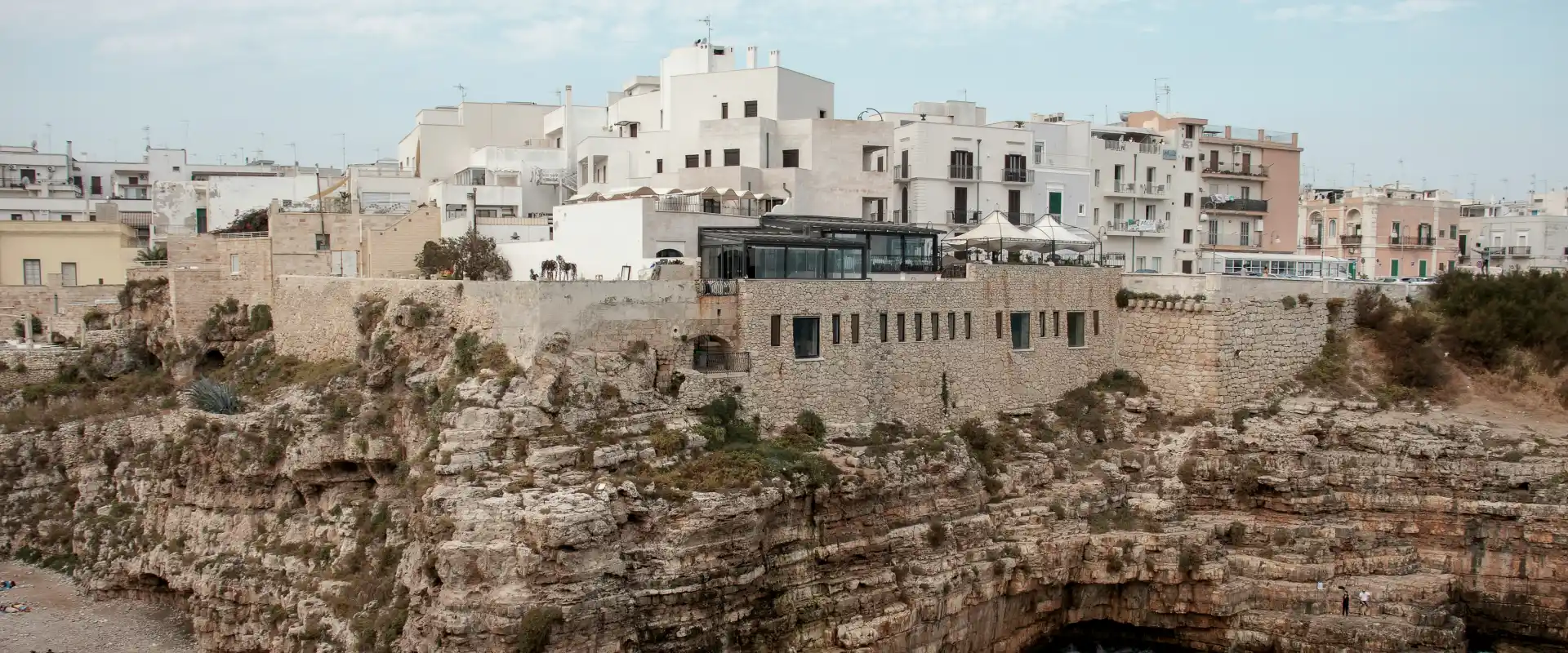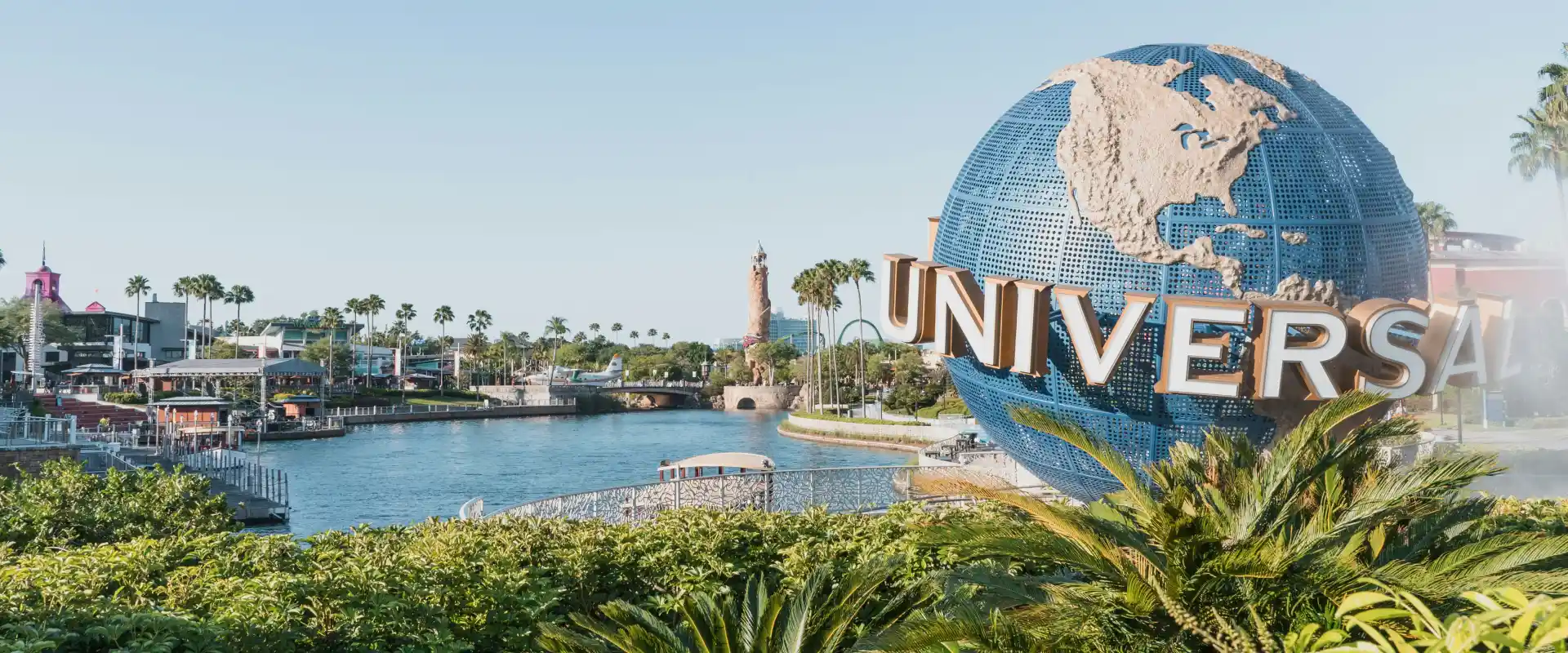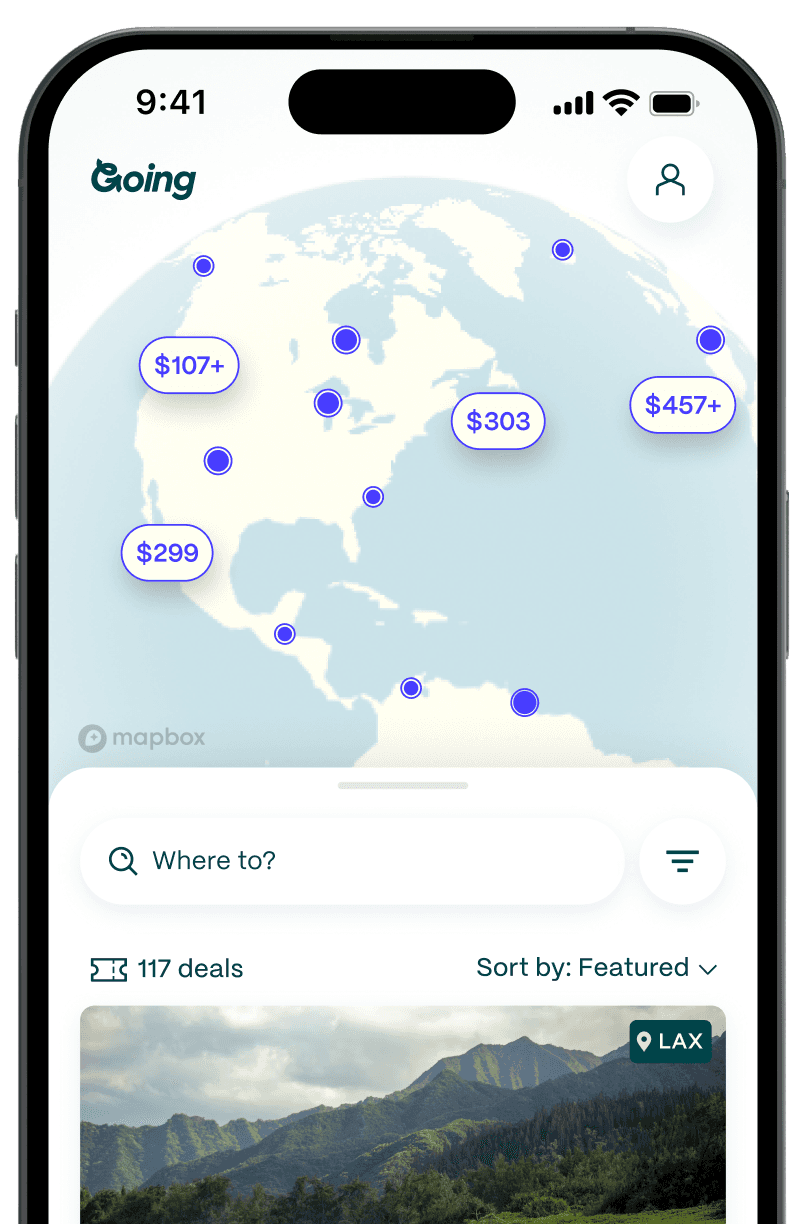
Puglia: The Bicoastal Region That Produces 40% of Italy’s Olive Oil
Puglia—the region occupying the stiletto of Italy’s boot—has acres of olive groves producing 40% of the country’s olive oil, idiosyncratic conical houses, and nonnas who make fresh pasta on the streets. It also has two long coastlines of contrasting character: the Adriatic side of sheer cliffs and giant rock pools and the Ionian stretch of paradisiacal beaches nicknamed the “Maldives of Italy.”
The region has long been a favorite getaway for Italians themselves, thanks to its hot, dry summers and ample beach space. It is also a place where life—and food—is a slow affair.
Nature is never far away, with two UNESCO-designated national parks that cover a total of nearly 460,000 acres. Just make sure you have a car to make the most of the region’s rural delights, as public transport is mainly limited to connections between cities.
Spectacular salt pans
Geographically speaking, Puglia is shaped a bit like an upturned hockey stick. The wide northern part is a wild steppe of national parks and nature reserves, while the more popular south flattens out with the occasional hill topped with a hamlet and around 500 miles of coastline (of which 186 miles are beaches).
Instead of following the crowds straight to the south, take your time in the north, where you’ll find one of Europe’s largest salt pans—the Saline di Margherita di Savoia—which covers an area of about 9,600 acres. Pink flamingos come to breed here every summer, and in the winter, great mounds of salt shimmer pink and orange at sunset. You need to book a guided tour to visit, which lasts from two to five hours.
Just 35 miles away, you can explore another natural wonder: a cave with thousands of dinosaur footprints in Alta Murgia National Park. The footprints were accidentally discovered in 1999 by two marine geologists. It's easy enough to get to, accessible from nearby towns, such as Gravina and Altamura.

Medieval bread
The region’s best food is no-fuss fare that would historically have been cheap to make and eaten by Puglia’s lower-income inhabitants. It is exemplified by two staple foods: bread and pasta.
Venture into Bari’s labyrinthine old center; along one street called Via Arco Basso, women sit in the shade with wooden trays forming pasta into orecchiette, or “little ears,” a shape invented in Puglia around the 13th century. With a swift thumb and finger action, they press a lump of dough into a little cupped disk and flick it onto a mounting pile to dry. If you want to purchase a fresh bag of orecchiette—drop the pasta into boiling water for five minutes to be cooked al dente—you'll be welcomed like a friend into the vendor's house; each bag typically goes for about €5. The most popular pasta dish of Puglia is orecchiette pasta with cime di rapa (broccoli rabe). Head to Terranima or Vini e Cucina in Bari to try it in a restaurant.
Or head to the nearby Alta Murgia area for another food tradition. Altamura bread, made using a sourdough starter and flour from the region, was praised by the poet Horace in 37 BCE in his Book of Satires as the best bread he’d ever tasted. Still today, it is baked in wood-burning ovens using a recipe of local twice-milled durum wheat flour, water, yeast, and salt that has been unchanged since at least 1400. Visit the town of Altamura, and you’ll find dozens of bakeries advertising the bread with certified protected designation of origin (PDO) status.
The conical houses built to be pulled down
As you head south, dotted across the arid landscape are little conical huts, known as trulli, that look straight out of a storybook. Stop in the town of Alberobello (about 34 miles south of Bari), where around 1,500 of these whitewashed, limestone structures fill the center. Thanks to the concentration and excellent preservation of the structures, they became a designated UNESCO World Heritage Site in 1996. With pointed slate roofs, these trulli originated with the Messapians during the Iron Age from 1200-550 BCE.
The legend goes that, in the 15th century, the mortarless dwellings became a popular way to avoid settlement taxes because they could be easily knocked down (and later rebuilt) when tax collectors came around. Look out for white painted symbols and pinnacles on the roofs said to ward off evil spirits. Visitors can see inside a rare two-story version of the structure at the Trullo Sovrano museum. Many have also opened as rental accommodations, shops, and restaurants.

Castel del Monte
Castel del Monte’s clean, geometric perfection gives it the look of a castle from a computer game. Sitting high on a grassy mound in the province of Andria, it is one of the most iconic symbols of Puglia. It’s also the region’s most visited attraction, represented on the one cent coin, and has been a UNESCO World Heritage Site since 1996.
The octagonal structure—with octagonal towers at each corner—was built as a citadel in the 1240s by Emperor Frederick II, King of Germany and Sicily who inherited the land in Puglia from his mother, Constance of Sicily. A behemoth of mathematical and astronomical precision, the castle is renowned for merging cultural influences from northern Europe, classical antiquity, and the Muslim world, including an innovative hydraulic installation for bathing in the Arabic fashion. This forward-thinking vision has awed visitors for centuries, including Italian author Umberto Eco who used the castle as inspiration for a building in his novel The Name of the Rose. To visit the castle, book your 45-minute time slot online. It’s best to purchase an audio guide to make the most of the interior—interconnected rooms decorated with marble columns and fireplaces.
Gay-llipoli
Although not a deliberate or coordinated effort, the coastal city of Gallipoli is emerging as an LGBTQ+ hotspot, drawing visitors from around the world. In terms of LGBTQ+ rights, Italy is one of the most restrictive places in Western Europe. Same-sex civil unions provide most of the legal protections of opposite-sex married couples but not all, and adoption by same-sex couples is not legal. That said, quite a few cities have a thriving gay scene, especially among younger generations—and Gallipoli is one of the top.
There are gay-friendly nudist beaches and queer clubs like Makò beach club. Salento Pride—among the most important Pride events in Italy—often takes place in the city (although it was in nearby Lecce in 2023). The two-week festival sees up to 5,000 people parading through the city center, as well as special events like drag performances and sexual health conferences.

A coastline of contrasts
To experience Puglia properly, you need to explore both its coasts. Traveling by car is the best way to do this. Head to the south, and begin your coastal journey on the east side, level with the city of Lecce. This is the Adriatic coastline, characterized by natural rock-hewn pools, jagged limestone cliffs, and caves formed by the incessant nibbling of the sea. This area is best for those looking for wild, dramatic nature and who are happy with few amenities.
Stop at the Grotta della Poesia, a vast natural pool that you can plunge into from the rocks more than 15 feet above, and seek out the tunnel leading to the sea. Then swing by Torre dell’Orso, home to a little sandy bay and distinctive rock formations. Continue down to the most southerly point of Puglia to the town of Santa Maria di Leuca, where you can often spot a distinct line and color change where the two seas meet.
Then begin your trip up the western coastline along the Ionian Sea, where you’ll instead find the “Maldives of Italy”—postcard-pretty beaches with limpid water and buzzing bars. This is a good area for families or those looking to flop on a sunbed with excellent seafood just a few steps away. Head to Porto Cesareo for the area’s most famous beach (Punta Prosciutto) and for snorkeling in the marine reserve.
A bonanza of Baroque
Puglia lays claim to a distinct architectural style that originated in the late 16th century in the city of Lecce (dubbed the “Florence of the South”) and gradually spread to other cities in southern Puglia in the 17th century. It was influenced by ornate Spanish architecture introduced by Aragon rulers and allowed to flourish thanks to the diminishing threat of Turkish invasion after the Battle of Lepanto. With a new freedom to create buildings without a defensive purpose, architects and designers took advantage of the soft, easily carved Leccese stone to make lavish facades in decoration.
The medieval city of Lecce has a confection of honey-hued, 17th-century buildings in this unique style known as barocco leccese (Lecce Baroque). It is recognizable as fantastically over-the-top, like intricate piped decorations on a wedding cake. The showpiece is the Basilica of Santa Croce, with a facade of mythological animals, anthropomorphic figures, garlands, and foliage. The Basilica di San Giovanni Battista al Rosario presents another exuberant facade by master of the barocco leccese style, Giuseppe Zimbalo. Balustrades (rows of small columns) support enormous foliage decorations, and the door is flanked by two giant spiraling columns.
Islands of exiles
Off the coast of Puglia lie the Tremiti Islands. The archipelago has a history of exile and punishment, but today, each island has a different character making it uniquely worth a visit. History buffs should make a beeline for San Nicola, crowned by the 11th-century Santa Maria a Mare abbey housing a symbol-rich mosaic floor. Nature lovers should hop over to San Domino, where limestone cliffs are crowded by Aleppo pines. It is also home to the Ripa dei Falconi, a breeding ground for rare falcons. And wild, uninhabited Capraia is best for snorkeling and scuba diving in the surrounding waters, which hide the wreck of a 2nd-century Roman ship.
Good to know
Is Puglia expensive?
Puglia is generally an inexpensive place to visit, though prices have been creeping up in recent years and are often inflated in summer. Historic countryside properties, known as masserie, run around $150 per night, while you can snag an apartment in a city for less than $100. For a sit-down dinner in a mid-range restaurant, you can expect to pay about $15-$20 for a pasta dish with fish. For cheaper meals, like street food, you can fill up for under $5. Unless you’re thinking of renting a boat (which starts around $15/hour), you can enjoy a day on around $10-$20 to cover entry fees to attractions.
Best time to visit Puglia
Puglia is typically a summer destination, thanks to ample sunshine and high temperatures. But the shoulder seasons of April to June and September to October mean fresher weather and fewer crowds. Winter can also be mild in Puglia, though the weather is less predictable.
Puglia with kids
Puglia has plenty of family-friendly attractions. It is a typical destination for Italian families, thanks to well-equipped beaches with children’s activities and national parks packed with peculiar natural history.
Puglia public transportation
Puglia has a relatively robust train network if you’re sticking to cities and towns. To make the most of the secluded beaches, hilltop hamlets, and rural attractions, however, a rental car is recommended.
Is Puglia safe?
Italy ranks #34 out of 163. The region of Puglia is generally a very safe destination. There is a small risk of petty theft and pickpocketing in areas like train stations, busy markets, and unmonitored parking lots. As far as LGBTQ-equality goes, Italy ranks #36 in the world with a score of 67 out of 100. The region of Puglia, in particular, is generally very welcoming to the LGBTQ+ community.
Join Going to notified on amazingly cheap flights to Italy and around the world.
Other Italy guides
Last updated May 23, 2025









